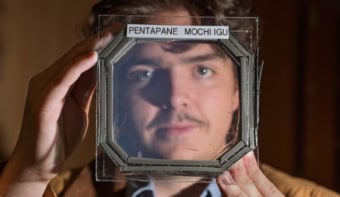
It is fair to say that European nations have been at the forefront of developing renewables, such as wind turbines and solar panels. Although the bulk structures of these technologies are made using common materials such as steel and silicon, they also have components containing rare-earth elements such as neodymium, praseodymium and indium.
The concerning thing for Europe is that the majority of these scarcer materials are imported, especially from China, leaving the continent vulnerable to shortages and dramatic price hikes. At the same time European industry is also heavily reliant on the rest of the world for other important metals and minerals. In short: Europe needs to rediscover its mining mojo.
Help may now be on its way in the form of robots. That’s what I learned this week in Vienna at a session of the general assembly of the European Geosciences Union. Luís Lopez of La Palma Research Centre in Spain gave an update on the UNEXMIN project, which is developing robotic systems for the autonomous exploration and mapping of Europe’s flooded mines.
Lopez explained that Europe’s rich industrial heritage has left a vast network of approximately 30,000 closed mines. These mines closed due to a range of economic factors, not necessarily because of complete mineral depletion. But as the years have passed, the majority of the mines have flooded, making it dangerous and expensive to assess their potential for reopening.
To tackle this problem, the UNEXMIN team are developing a trio of spherical robots that can enter these mine networks and carry out detailed surveys. Their arsenal of scientific instruments includes cameras, sonar, a water sampler and multispectral cameras, developed at the University of Miskolc in Hungary. The aim is for the three robots – named UX-1a, UX-1b and UX-1c – to work as a team collecting different sorts of data to get the most out of their battery life.

In April 2018 the first prototype was unveiled, weighing 110kg with a 0.6m diameter. Its speed is 1–2 km/hr and its maximum operational depth is 500m with autonomy up to 5 hours. Since that time, the team has run trials in Finland’s Kaatiala mine (a former source of quartz and feldspar) and Slovenia’s Idrija mine (an historic source of Mercury). This month, the team will finish its test at Portugal’s Urgeiriça uranium mine, ahead of a final trial in May at the UK’s Ecton Mine, a former source of copper, lead and zinc.
Due to the risk of losing the untested robot in such harsh environments, the device has so far been tethered to an operating system by an “umbilical chord”. But the long term aim is create fully autonomous robots that can be used by mining companies, researchers and other organisations interested in these sites.
The project is supported with money from the EU’s Horizon 2020 programme and the team has already created a spinout company. The technology could also be used to explore archaeological sites and places of cultural interest. The team is also developing an interface so that the general public can interact with the data via VR sets.



